Additional breast cancer screening tests
More tools for detection and diagnosis.

Talk to your doctor if you have questions about additional screenings after a mammogram.
What you need to know
Sometimes a mammogram does not show enough detail for a doctor to determine if a woman has breast cancer. In these cases, a doctor may want to take a closer look at suspicious tissue to either confirm or rule out a cancer diagnosis. These tests can also help them learn more about the size and location of the cancer if it is found, and understand if it has spread to other parts of the body. Though these diagnostic tests cannot prevent cancer, early detection is our best chance in catching and treating it early.
If additional screening is needed, Legacy uses the advanced, non-invasive technologies of Breast Specific Gamma Imaging (BSGI), MRI and ultrasound. These high-tech tools give doctors a better view of suspicious tissues.
Breast Specific Gamma Imaging (BSGI)
BSGI, also called scintimammography or nuclear medicine breast imaging, involves using a special camera and computer to trace a tiny amount of a radioactive agent that is injected into a vein in your arm. Doctors can better pinpoint cancers because the tracers accumulate differently in different types of tissues. BSGI is especially useful in early breast cancer detection and can help you avoid a biopsy.
BSGI usually takes about 90 minutes. You'll be seated comfortably, and you won't feel anything from the BSGI scan itself.
How to get ready
On the day of the exam, don't use deodorant, perfume, powders or ointments under your arms or on your breasts. Wearing a two-part outfit will make it easier to undress.
Magnetic resonance imaging (MRI)
MRI is a safe, painless way to get the best possible view inside the human body. An MRI uses magnets and radio waves to create detailed images of soft tissue to help your doctor find cancer in the body and see if it has spread. It’s a painless procedure and requires little preparation. MRI does not use radiation.
Several sets of images are usually needed, each taking two to 15 minutes. The exam may take 90 minutes or longer. It's important that you lie as still as possible to make sure that we get the sharpest images. Ask for medications to relax you before your MRI test.
Some exams require a special dye called “contrast material,” which is usually given before the test through a vein in your hand or forearm. The dye helps the radiologist see certain areas more clearly.
How to get ready
Please tell the health care provider if you have brain aneurysm clips, a pacemaker, automatic internal defibrillator (AID), artificial heart valves, inner ear (cochlear) implants or recently placed artificial joints. Depending on the type of metal in these devices, you may not be eligible for an MRI.
You will be asked to remove jewelry and wear a hospital gown during the scan.
If contrast material will be used, you may be asked not to eat or drink for one hour before the scan.
Ultrasound and 3-D ultrasound
Ultrasound, or sonography, uses sound waves to get a better look at the breast tissue and take pictures. It is a safe and painless procedure. 3-D ultrasound works on the same principle as standard ultrasound, but is specifically designed for better detection of breast cancer if you have extremely dense breasts. The addition of 3-D ultrasound screening can increase the detection of invasive cancers. The 3-D ultrasound screening along with your annual screening mammogram will help provide a more thorough evaluation of your dense breast tissue.
The difference between automated 3-D ultrasound is that it provides hundreds of high-resolution images of the entire breast for the radiologist to review, and hand-held ultrasound produces a few representative images.
How to get ready
- Don’t wear lotion, powder or other substances on the day of the tests.
- Wear clothing that is easy to take off and lets the radiologist or technologist reach your chest.
- The gel they use in the test shouldn’t stain clothing, but you might want to wear older clothing; some gel may remain on your skin when the test is done.
Dense breasts
Women with dense breasts sometimes require additional screening: they have more fibrous or glandular tissue that can make it harder to see small growths, which may be breast cancer. Ten percent of women have this type of breast tissue. Women with dense breasts may want to have more tests and should talk with their provider.

